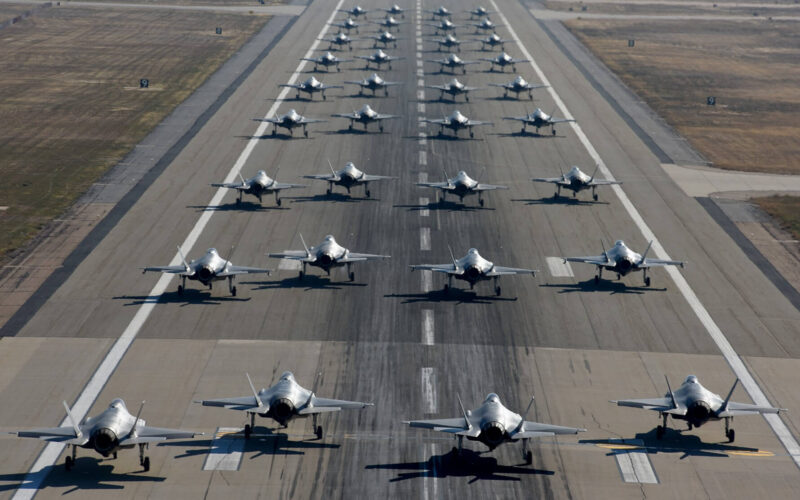European airspace has already become more complex and busier due to increased military activity following the Russian invasion of Ukraine, but new fighters and developments in space launches mean even more coordination will be needed in future.
Those were some of the challenges laid out by Major General Karsten Stoye, Head of the Civil-Military Cooperation Division at European network manager Eurocontrol, during a Eurocontrol conference in Brussels on October 4, 2022.
“To make a long story short, we need to go into the future together. And we need to change our mindset, working much closer together in harmonizing much more, from the military perspective and the civilian side. And that’s why I’ll try to get both sides together,” Stoye told the conference.
Stoye explained that NATO was working in a “new normal” mode, with an increased presence and vigilant activities in the eastern flank of the alliance. The NATO 2022 Strategic Concept was adopted at the Madrid summit in June 2022.
That means around 30 allied surveillance and fighter jets are in the air at any one time, according to a slide Stoye displayed. Coordination is required to ensure military aircraft and commercial aircraft can both safely use the skies. This has led to airspace restrictions in 2022, notably over Poland.
“We will have much higher demand in the new normal and the future as far as military aircraft is concerned. In 10 years, we will have over 400 F35s in Europe, which have a much bigger demand than space and distance with their modern weapons,” Stoye explained. All the nations around the North Sea will be F-35 nations in future, he said.
European countries such as Germany, Italy and Czechia have recently selected the Lockheed Martin F-35.
Common airspace
One of the ideas currently being discussed at NATO is to establish a combined airspace area over the North Sea to facilitate operations, Stoye said. In Europe, each country is responsible for its own airspace.
Since March, there has been a combined airspace area over the Baltic States with Poland, after Russia’s invasion removed a lot of the hurdles that had previously prevented it, the Major General explained.
“It took us years to get a combined airspace. But after the 24th of February, then we had an airspace in March,” Stoye said. “There was a combined effort between the civilian side and the military side to open a temporary, segregated area.”
He said there are currently efforts underway to come up with new plans for how both military and commercial aircraft can make the best use of the airspace. For example, commercial aircraft often don’t fly through all the free airspace, whereas the military sometimes return the airspace to civilian operators later than agreed.
“We will have a rise in traffic in the next few years commercial-wise but also higher demand on the military side. This calls for cooperation. This calls for synchronization and this calls for a change in mindset on all sides,” Stoye said.
Adding to the challenges are expectations for an increase in space launches, Stoye said. For example, the United States is expecting 100 launches this year, which requires measures to protect other airspace users.
“We will see the same here in Europe in the future. How we want to approach this is a question we need to answer from the civilian side, but also for the military side.”

